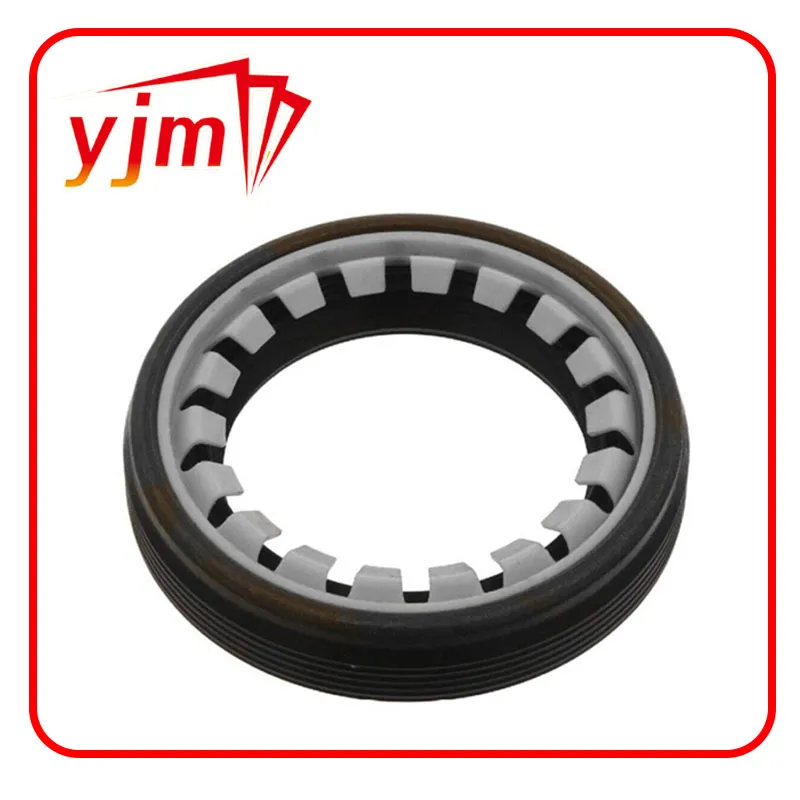transmission oil cooler seals
Understanding Transmission Oil Cooler Seals Importance and Maintenance
Transmission oil cooler seals are a critical component in the automotive industry, playing a vital role in maintaining the performance and longevity of vehicles. These seals serve the essential function of preventing transmission fluid from leaking, which not only protects the internal components of the transmission but also ensures optimal performance. In this article, we will explore the importance of transmission oil cooler seals, how they function, the potential issues that can arise, and tips on maintenance.
What is a Transmission Oil Cooler?
Before diving into the specifics of oil cooler seals, it’s essential to understand what a transmission oil cooler is. In essence, a transmission oil cooler is a component that helps manage the temperature of the transmission fluid. High temperatures can lead to transmission fluid breakdown, which in turn can cause gears to grind, parts to wear out faster, and make the transmission more prone to failures. The cooler reduces the temperature of the fluid as it circulates, ensuring that it remains at optimal performance levels.
The Role of Seals in Transmission Oil Coolers
The seals in a transmission oil cooler are designed to ensure a tight fit between various components, preventing any fluid leaks. These seals are typically made of durable rubber or silicone materials, which can withstand the high pressure and temperature fluctuations that occur in transmission systems. The integrity of these seals is crucial; even a small compromise can lead to leaks, reduced fluid pressure, and potential damage to the transmission.
Common Issues with Transmission Oil Cooler Seals
1. Wear and Tear Over time, seals can degrade due to constant exposure to heat and pressure. This wear can lead to cracks or gaps, which allows transmission fluid to leak.
2. Improper Installation If seals are not installed correctly, it can lead to improper sealing. This can cause leaks that may go unnoticed until significant damage has occurred.
3. Contamination Debris and contaminants in the transmission fluid can also damage seals, leading to leaks. Regular maintenance and fluid changes can mitigate this issue.
4. Environmental Factors Extreme temperatures and varying weather conditions can impact the durability of seals. Exposure to harsh chemicals or fuels may also lead to degradation.
Signs of Seal Failure
transmission oil cooler seals

It is crucial to be aware of the signs of possible seal failure in your vehicle
. Common indicators include- Fluid Leaks If you notice red or brown fluid pooling underneath your vehicle, this may be transmission fluid leaking due to a faulty seal.
- Overheating Transmission If your transmission is overheating, it could be a sign that the fluid is leaking and not circulating properly.
- Strange Noises Whining or grinding noises from the transmission can indicate low fluid levels as a result of leakage, often due to seal failure.
Maintenance Tips for Transmission Oil Cooler Seals
To prolong the life of your transmission oil cooler seals, consider the following maintenance tips
- Regular Inspections Periodically check for leaks and inspect the condition of your seals during routine maintenance. Look for signs of wear or degradation.
- Fluid Changes Regularly changing the transmission fluid can help remove contaminants that may damage seals. Follow the manufacturer’s recommendations for fluid change intervals.
- Professional Service If you suspect seal failure or leaks, it’s best to consult a professional mechanic. They can assess the situation and recommend appropriate repairs.
Conclusion
Transmission oil cooler seals play an indispensable role in the overall health of a vehicle’s transmission system. By understanding their significance, being aware of potential issues, and adhering to maintenance best practices, vehicle owners can help ensure the longevity and efficiency of their transmission systems. Regular attention to these small but essential components can save significant costs in repairs and extend the life of your vehicle.
-
Simplifying Oil Changes: A Comprehensive Guide to Oil Drain Plugs and Their Variants
News Aug.04,2025
-
Mastering Oil Drain Maintenance: Solutions for Stripped, Worn, and Upgraded Oil Plugs
News Aug.04,2025
-
Fixing Oil Pan Plug Issues: Leaks, Stripped Nuts, and the Right Replacement Solutions
News Aug.04,2025
-
Everything You Need to Know About Oil Drain Plugs: Sizes, Fixes, and Upgrades
News Aug.04,2025
-
Choosing the Right Oil Drain Plug: A Guide to Sizes, Materials, and Drain Innovations
News Aug.04,2025
-
A Complete Guide to Automotive Drain Plugs: Types, Problems, and Innovative Solutions
News Aug.04,2025
-
The Ultimate Guide to Car Repair Kits: Tools and Essentials Every Driver Should Own
News Aug.01,2025
Products categories















